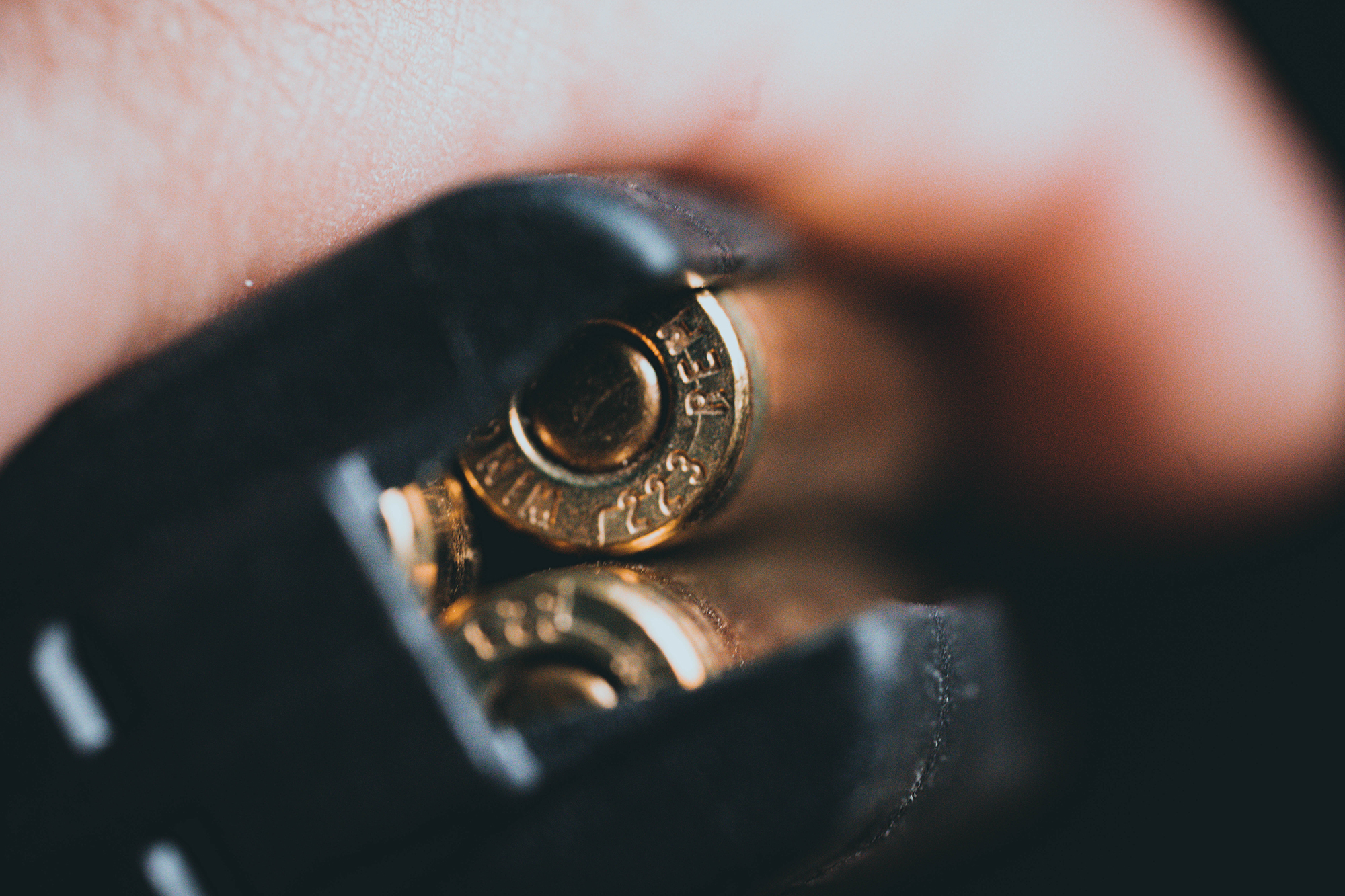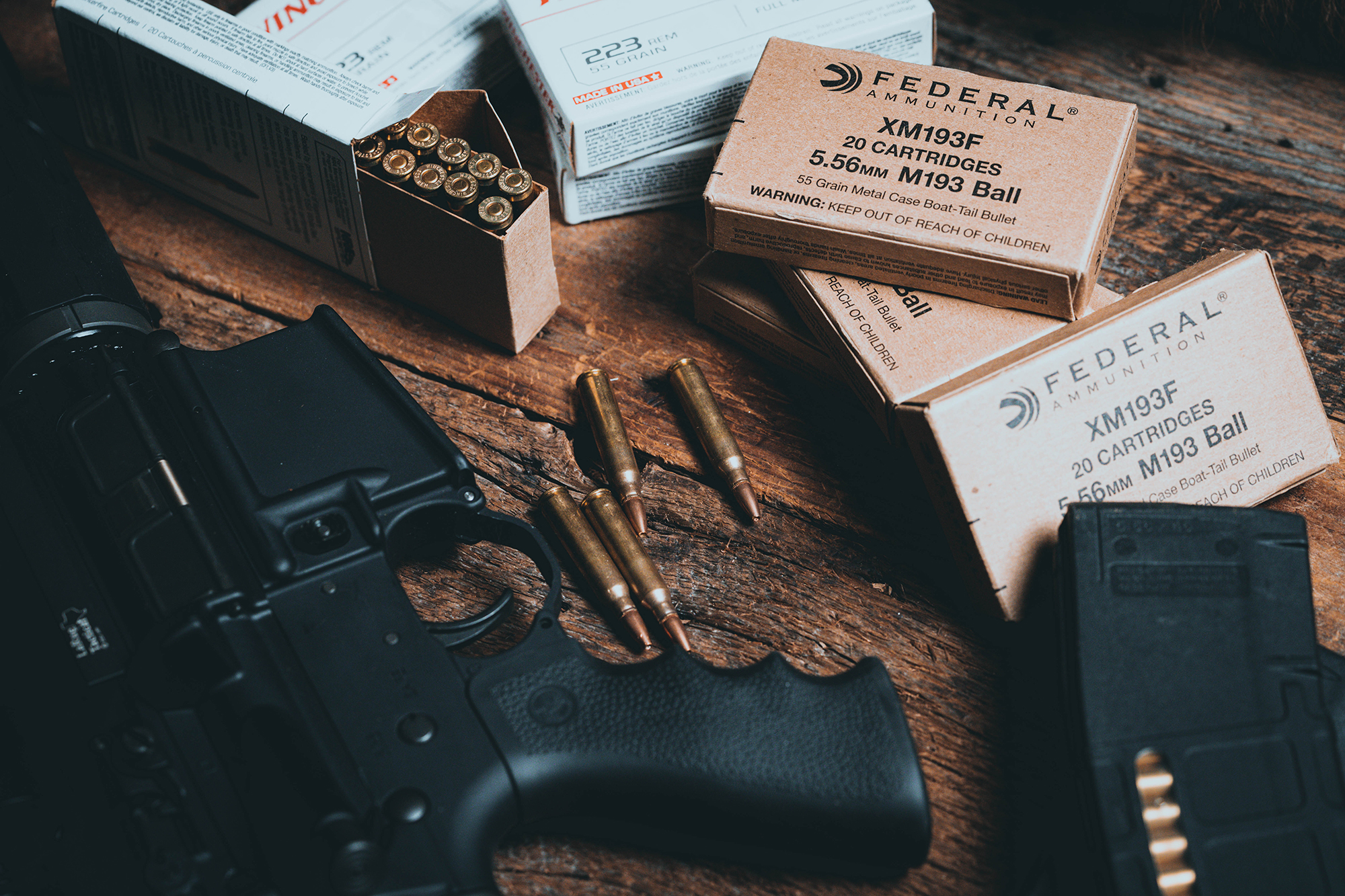The recent high-profile shootings in the US have invigorated a new wave of anti-gun sentiment and proposed legislation throughout the country and a reciprocal rallying of Second Amendment supporters defending gun rights. As so often is the case, there have been myriad claims made in the mainstream media about the capabilities and characteristics of the AR-15 rifle platform and the .223 Remington/5.56 NATO cartridge.
Last week, NPR gave new life to some old and bogus claims about the AR and the .223 that go back to their very creation in an attempt to prove there is something inherent in the rifle platform that makes it somehow different — somehow more deadly — than any other rifle.
“There’s nothing magic about the AR-15. There’s no voodoo. The difference between the AR-15 and other semi-automatic rifles really does come down to cosmetics.”
— Michael Mihalski, founder of Sons of Liberty Gun Works
The news organization made the following claim in a story about the horrific mass murder in Uvalde, Texas that was repeated in an accompanying tweet:
“The AR-15, which is the weapon used by the gunman at Robb Elementary, is designed to blow targets apart,” says the story, which was published on May 31. “It’s a weapon built for war. And when fired into a human adult body, its bullets travel with such fierce velocity that they can decapitate a person, or leave a body looking ‘like a grenade went off in there,’ as Peter Rhee, a trauma surgeon at the University of Arizona, told Wired.”
Most anyone who has spent any time using an AR chambered in .223, at the range or otherwise, knows these claims ring false. Free Range American talked to some experts who laid out exactly why they don’t hold water.
RELATED – Half of U.S. Now Has Constitutional Carry, Gun Debate Still Rages
A 5.56 Guillotine?

The article’s claim that a .223’s extreme velocity can decapitate people seems to have originated with a story posted by theintercept.com. That story, in turn, cites a Gawker story from 2016 that is based on reports regarding the performance of the earliest AR-15s that were field-tested in Vietnam 60 years ago.
The Gawker story cites a 55-page study supposedly submitted in the early 1960s by the Defense Documentation Center for Scientific and Technical Research (now the Defense Technical Information Center), the results of which were pulled from evaluations made by American advisors and South Vietnamese personnel when the first shots of the Vietnam War were being fired.
The early 1960s were full of political conflict and dick-measuring over what the philosophy behind the US military’s new standard rifle platform would be going forward, and any report on weapon performance from that time period should be taken with a massive grain of salt.
It also must be understood that the AR-15 and the .223 cartridge were not chosen by the military because they were the most powerful option available — far from it. And there’s a reason hunters never took to the .223 as anything but a small game cartridge. Yes, it moves at higher velocities than, say, a .308 bullet does, but the projectiles also have substantially less mass. The high velocity was necessary to get the small, light bullet to perform to the most basic terminal ballistic standards.
As the 1950s were coming to a close, the military’s old guard wanted to adopt the T44, which became the M14. It was essentially an updated, select-fire version of the M1 Garand chambered in .308 Winchester (7.62 NATO), which was an updated version of the .30-06 Springfield cartridge (ballistically similar but for use in a short action).
The new guard, characterized by Secretary of Defense Robert McNamara who took office in 1961, wanted to go a different way that was based on what they considered hard data.
Part of the argument against the M14 and the .308 at the time was that combat data collected during WWII and the Korean War revealed most battlefield engagements occurred at moderate to close range. Some interpreted this to mean that the .308 and its predecessor, the .30-06, were unnecessarily overpowered and that an intermediate cartridge would be more effective while also allowing personnel to carry more rounds for the same amount of weight. They also thought an intermediate rifle cartridge would be controllable in full-auto, potentially allowing a service rifle to fulfill the role of the submachine gun.
Michael Mihalski, the founder and co-owner of Sons of Liberty Gun Works in San Antonio, Texas, told FRA that accuracy results from the target range also helped get the AR-15 and the light-recoiling .223 adopted by the military.
“The AR-15 was going up against the T44 prototype, which is now known as the M14, in .308 (7.62 NATO),” Mihalski says. “And whenever you would take the same group of soldiers and have them qualify with both guns, almost double the number of shooters could qualify ‘expert’ with the .223, because the recoil was so much lighter. The destructiveness of the cartridge really had very little to do with its design.”
The AR was truly innovative in its modular design, which made it much easier to maintain in the field and to repair, and its use of modern materials like polymers and aluminum that were already common in the aircraft industry. This also made it a light firearm compared to one made of wood and steel. However, Eugene Stoner originally conceived the gun as the AR-10, chambered in .308 Win.
“The reason the .223 round was selected had nothing to do with its destructiveness,” Mihalski says. “It was selected by the Army and allowed to move forward at the Aberdeen Proving Grounds because a soldier could carry more ammo because it’s lighter and smaller than .308.”

Mihalski says 9mm handguns have overtaken .40 S&W and .45 ACP handguns in the military, in law enforcement, and on the civilian market for a similar reason: Because people tend to shoot better and get more hits on target when they shoot a more controllable 9mm handgun, not because the 9mm is an uber-powerful pistol round.
Even still, the M14 ultimately won out and became the US military’s new service rifle, but when it ran into development delays and then production delays as the war in Vietnam began to heat up, McNamara went with Stoner’s downsized AR-15 in .223. Why? Because the military needed to get rifles into soldiers’ hands fast and the AR checked a lot of boxes. It was also the only rifle in the pipeline that had been through enough testing that it could be issued in a reasonable timeframe.
By the time it was finally adopted as the M16 and issued by the US military in 1965, the rifle’s production rights had been sold by ArmaLite to Colt, and Stoner had been hired away from ArmaLite by Colt.
“The truth is, it was not a well-received weapon by the military. There were many people who didn’t want it because the early military version was unreliable and it didn’t have as much knockdown power. And we all know that,” says Kyle Lamb, a decorated Special Forces veteran who fought in the Battle of Mogadishu and who has spent plenty of trigger time with the AR.

“I mean, bigger is better. So .30-06 or .308 are much better cartridges than the 5.56. That’s just a fact,” Lamb says. “If the .223 or 5.56 was as effective as journalists say, why is it illegal to use to hunt deer in some states? I weigh more than most deer in Virginia, I’ll tell you that.”
When asked if there’s any way a .223 could decapitate a person, even with modern hunting bullets and loads, Lamb said, “No, absolutely not. There’s no way,” and Mihalski agreed.
In short, the 5.56 and the AR-15 were chosen by the US military, and subsequently by NATO in 1980 and countless other militaries and law enforcement entities not because it was some wildly powerful combination of ammo and rifle, but because it was less powerful than battle rifles that had come before it, because it allowed for more ammo to be carried for the same weight, because it was easy to shoot accurately, and because of politics.
The Soviet Union and Eastern Bloc nations made a similar change in the early 1970s for similar reasons when they transitioned from the AK-47 and the 7.62x39mm to the AK-74 family of firearms and the intermediate 5.45x39mm cartridge.
RELATED – The Atf’s Renewed War on Forced Reset Triggers
The Old Tumbling Bullet Yarn

Now, let’s take a look at the claim that a .223 can create grenade-like damage inside of a person.
“There are bullets made for the AR-15 that have explosive effects on very small animals,” Lamb said. “So, if they’re talking about shooting a chipmunk, then I would agree with them. But there’s just not enough energy to do what they’re saying.”
In the civilian world, the AR platform never really caught on in the hunting world. Today, as Lamb noted, many states don’t even allow the .223 for hunting medium-sized game like deer, and even in states where it is allowed, many hunters feel its lack of power makes such applications ethically questionable. Mihalski says that while the .223 is adequate for civilian defense scenarios, it was never meant for long-range engagement or to hunt anything but small game.
“Civilians really aren’t in firefights at 300 meters or 500 meters. For home defense, the rifle is adequate,” he says. “When the .223 became the ‘.223 Remington,’ when it was submitted to SAAMI, it was marketed as a varmint round, and that’s what it was.”
This specific claim about the unfathomable damage a .223 can do is rooted in a story as old as the AR-15 itself. So the yarn goes: Stoner designed the twist rate of the AR-15 barrel and .223 ammo so that the bullet would tumble as soon as it hit the target. It would then careen around within a body cavity, causing catastrophic damage of which no other bullet is capable. The NPR story cites a report from the University of California, Davis that says precisely this.

It is, at its very best, a dramatic exaggeration that has very little, if any, basis in fact. Mihalski clears up the mystery behind this decades-old gun myth and why it doesn’t matter in the 21st century anyway.
“Yes, with the (original) 1:14 twist barrel the bullet did have a lot more yaw; that is absolutely true. We’re talking about the 1958 iteration of the gun,” he says. “Back in those days, every fifth round in a magazine was still a tracer, and that heavier, longer tracer bullet could not be stabilized by the 1:14 twist. Beyond that, accuracy went to shit on a 1:14 barrel, because the regular bullet wasn’t stable either. So, as part of [the AR’s] widespread adoption [in the 1960s], McNamara required it to have a 1:12 twist barrel.
“But all of that’s kind of irrelevant, considering that we use 1:7 barrels now across the board.”
No, Mihalski says, there’s nothing exceptional about the terminal performance of the AR in .223, and the Global War on Terror proved that, if anything, its performance is underwhelming. In fact, the US military is currently moving away from the 5.56 for a more powerful 6.8mm round.
“[The .223] was not specifically constructed to yaw in some crazy way that no other bullet did. The bullet was designed for weight reduction and accuracy with lighter recoil. That is it,” he says. “I’ll tell you what, 20 years of GWOT has really taught anybody who fought [in it] that the .223 cartridge is pretty underwhelming. That’s why the American military has been trying for decades to come up with a more adequate round: Because the .223 is not this fucking lethal cartridge that people make it out to be.”
RELATED – ATF Compiling ‘Form 4473’ Database with Nearly a Billion Records So Far
There’s No Voodoo Behind the AR-15

Lamb says ARs are involved in so many high-profile shootings simply because, after being around for almost 70 years they are extremely common, and they’re popular, both in the gun world and pop culture.
“I would say that the only two things I know of that make [the AR-15] more deadly than other semi-auto rifles would be the journalists that promote it as such, and the AR-15’s predominance in video games,” Lamb says. “I’m not saying video games are wrong or harmful, don’t take it like that. They’re just making that gun more popular because it’s in every game, and journalists sensationalize the AR-15.”
Indeed, many stories in the mainstream media make the rifle out to be somehow unique in an utterly indefinable way, often resulting in claims as hyperbolic as those in the NPR story.
“There’s nothing magic about the AR-15,” Mihalski says. “The problem that I see a lot from sitting on panels and roundtables and debate stages: You have really well-intentioned, poorly informed people that are concerned about the AR-15. There’s almost this mystery, or voodoo — almost as if it radiates evil. But as a gun maker who understands the mechanical simplicity of the gun, I can demystify it. There’s no voodoo. The difference between the AR-15 and other semi-automatic rifles really does come down to cosmetics.”
READ NEXT – Firearms Policy Coalition: On the Front Lines of the 2A Battlefield







Comments